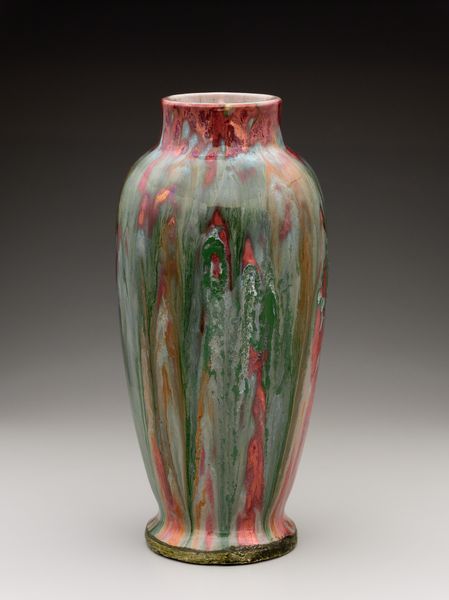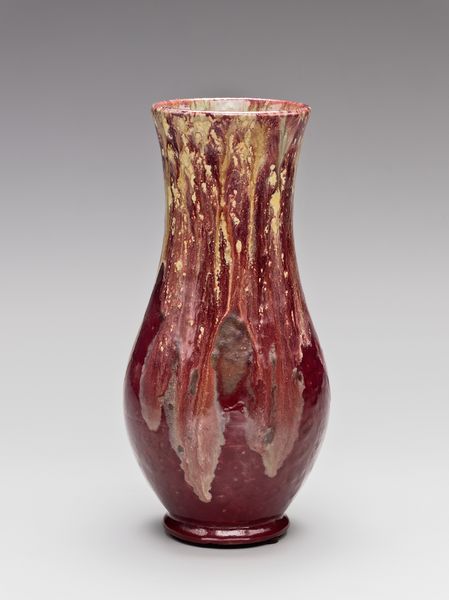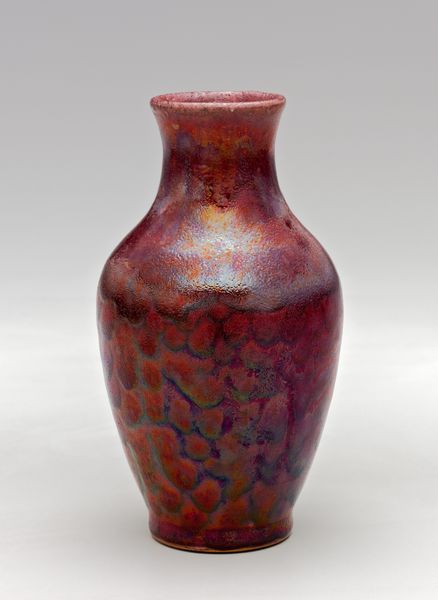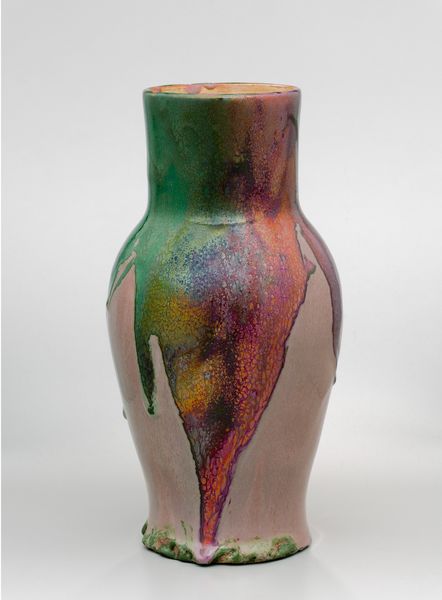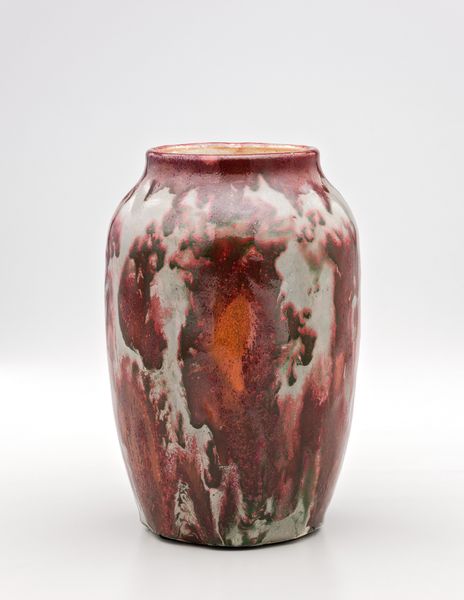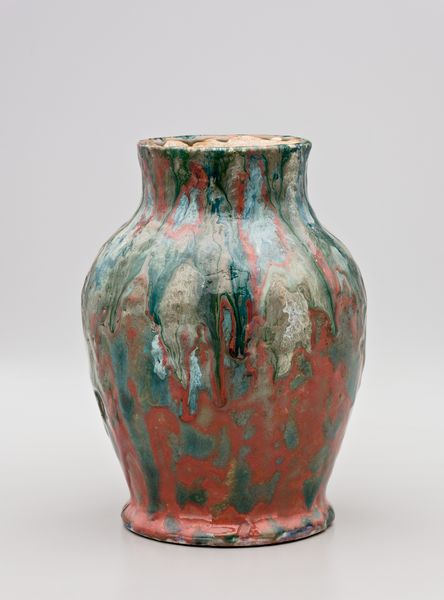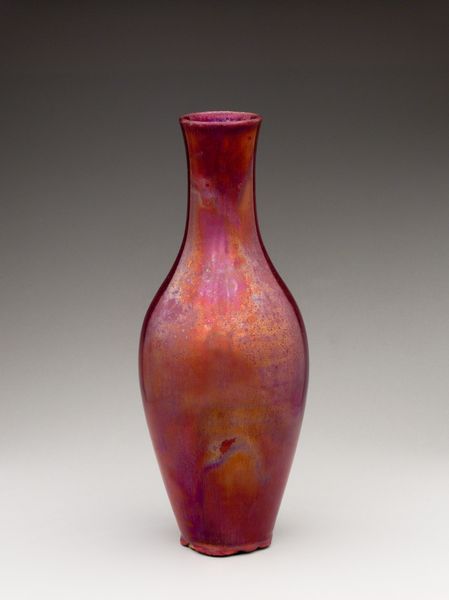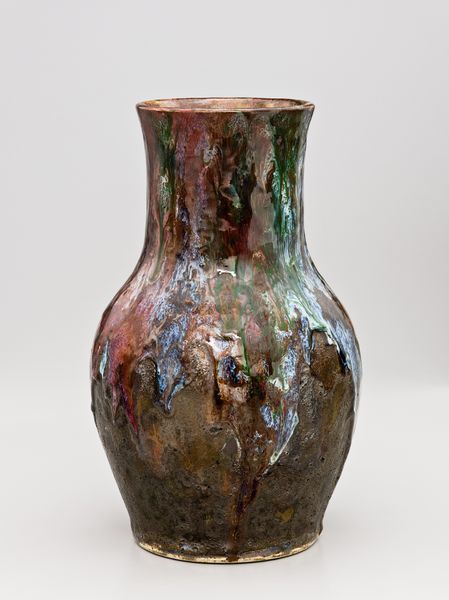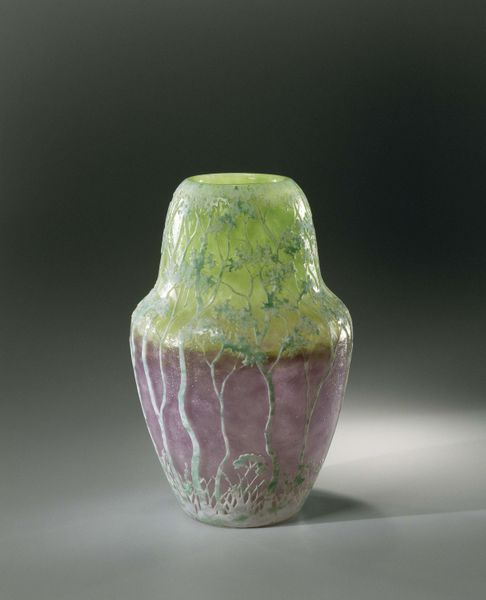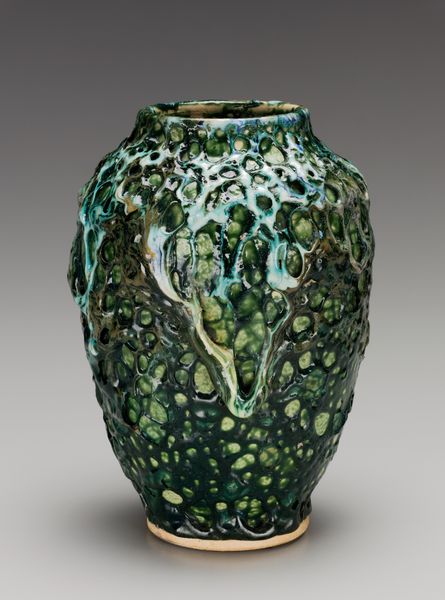
ceramic, earthenware
#
arts-&-crafts-movement
#
ceramic
#
earthenware
#
stoneware
#
ceramic
#
decorative-art
Dimensions: 9 3/4 x 5 1/16 in. (24.8 x 12.9 cm)
Copyright: Public Domain
Curator: Standing before us is a striking vase produced by Dedham Pottery sometime between 1893 and 1911, currently housed at the Metropolitan Museum of Art. Editor: Well, it’s certainly… earthy. I'm immediately struck by the mottled, pale green glaze, the pooling crimson, and how the floral decorations almost melt into the background. There's an interesting tension between control and fluidity in the piece. Curator: It's important to view Dedham Pottery through the lens of the Arts and Crafts movement. The studio emphasized handcrafted production, offering an alternative to industrial manufacturing and mass consumption. The deliberate drips and runs you observe, which speak to the process, challenge notions of pristine, flawless "high art." Editor: I see your point. Though, let's consider how those drips also function visually. They lead the eye downward, emphasizing the vase's volume. The limited palette, and simple, almost stylized tulips contribute to an overall feeling of organic unity. It’s not just about function, it’s how those functional aspects become the piece's formal identity. Curator: Right, and let's consider the local sourcing. Dedham Pottery often used local clay. The Arts and Crafts movement had roots in societal reform – looking critically at production and consumption, which is evidenced here through both labor practices, material use, and production techniques that were popularized by women artisans during the time. Editor: And I wonder, what are those floral shapes, what might they have signified at the time of the vase’s creation? They look a little too abstract for strict botanical accuracy. Perhaps an evocation of the natural world filtered through the lens of aesthetic ideal. Curator: Or perhaps a stylized attempt at local flora in order to promote craftsmanship of regional landscape elements and artistic styles, which speaks to the core intention of the Arts and Crafts movement… Editor: Indeed! It's fascinating how this relatively simple ceramic object contains so many layers of meaning—from material origins and studio practices, to artistic expression and possible symbolic weight. Curator: Absolutely. Examining the creation and intent informs the visual whole and makes viewing the object much more holistic.
Comments
No comments
Be the first to comment and join the conversation on the ultimate creative platform.
